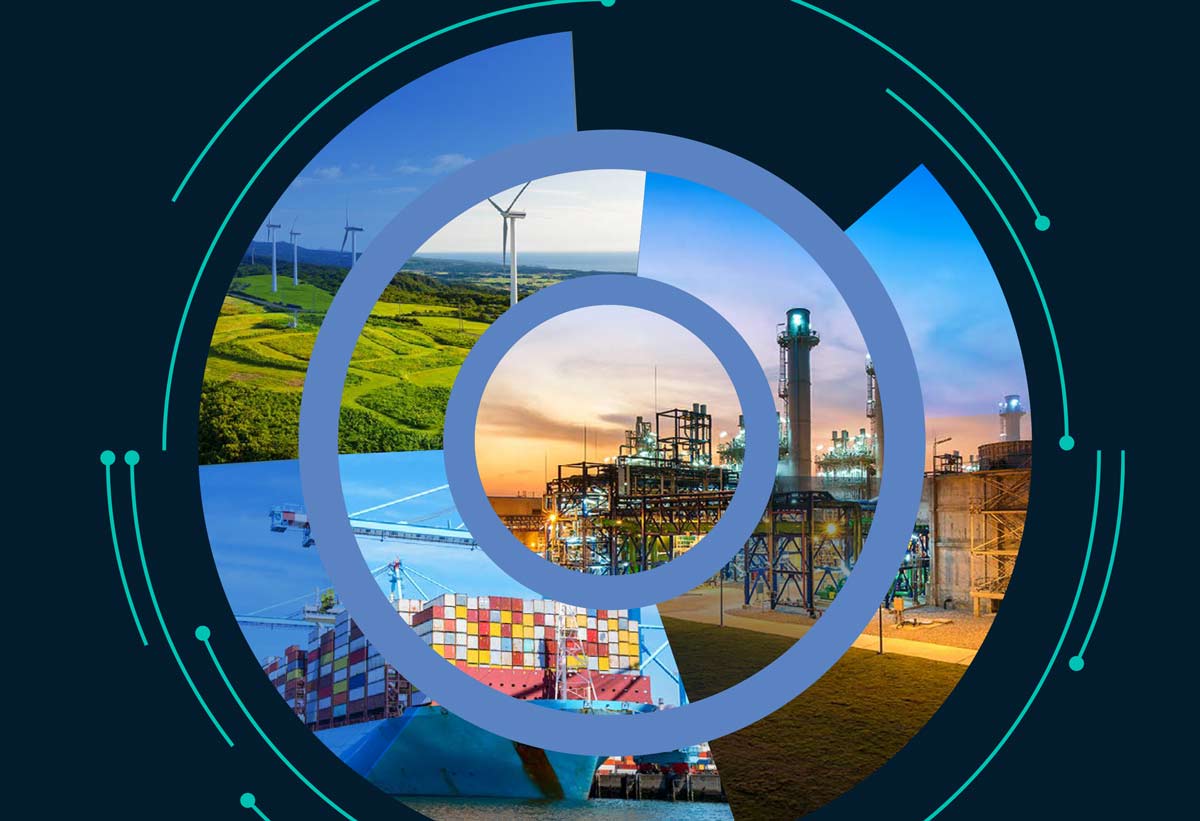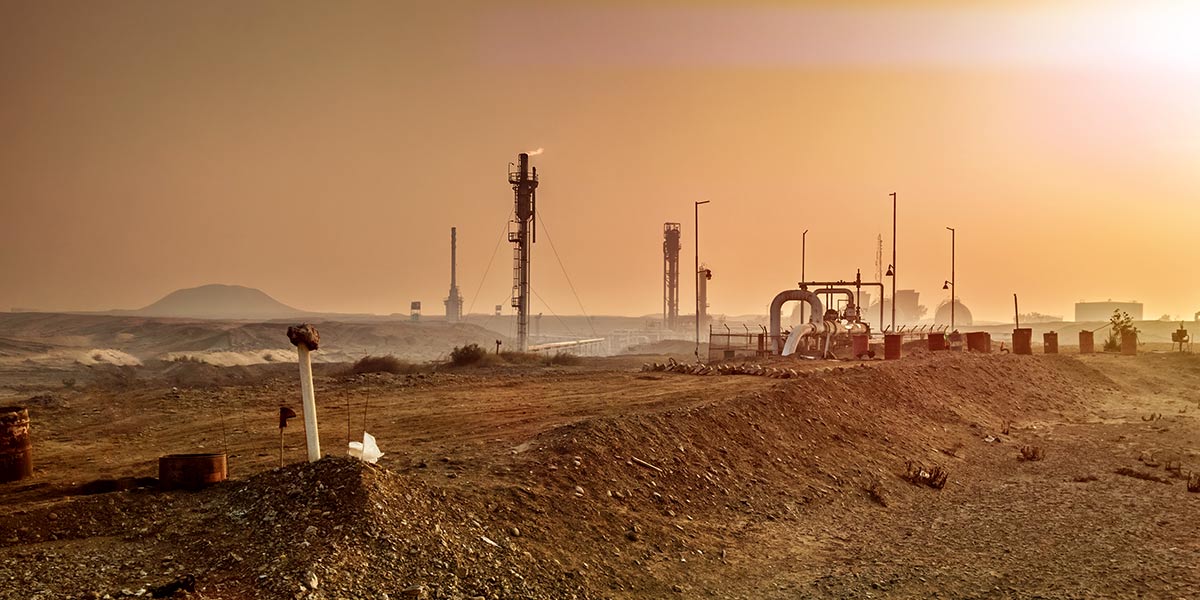Umar Ashfaq, Research Director, U.S.
Ida Hempel, VP, Market Development, Galvanize Climate Solutions
The pathway for greening the production of cement is not set in stone.
The cement industry has the potential to reduce carbon dioxide emissions from production by roughly 40% by 2030, or roughly double the reductions pledged to date by companies in the industry, thanks to a combination of technologies that are increasingly cost competitive, an analysis by Galvanize Climate Solutions and the MSCI Sustainability Institute finds.
The technologies, which include the use of less emissions-intensive binding materials, the harnessing of machine learning and control technology to optimize production, and reliance on low-carbon fuels to heat kilns, could all speed the industry’s decarbonization pathway.
A slog?
Emissions intensity projections for the cement industry tend to reflect the reality that production of cement will likely grow in response to global demand.1“Tracking Clean Energy Progress 2023: Cement.” International Energy Agency, July 2023. Projections also assume that technologies required to decarbonize the industry at scale will not achieve technological readiness or cost parity with incumbent solutions any time soon.2“The Climate Transition is Increasingly About Opportunity.” MSCI ESG Research, May 15, 2023.
Decarbonization targets set by cement producers mirror these projections. Just over one-third, or 35%, of the 23 listed cement producers in the construction materials industry have declared a target of either net-zero or carbon neutrality, as of August 2023.3The construction materials industry peer set comprises 23 listed companies that are constituents of the MSCI ACWI Index, as of August 31, 2023. The bulk of the construction materials industry peer set (70% or 16 companies) are domiciled in Asia. The MSCI ACWI Index captures large and mid-cap representation across 23 developed markets and 24 emerging countries. With 2,934 constituents, the index covers approximately 85% of the global investable equity opportunity set, as of Aug. 31, 2023. Only two of those producers (Cemex and Holcim) have set a target validated by the Science Based Target Initiative (SBTi), which would reduce their residual emissions to net-zero by 2050 while aligning with a 1.5°C pathway over the near term.4Cemex press release, Oct 10, 2023.5“Cement sector’s first 1.5°C science-based targets.” Science Based Targets. Nov. 2022.
The cement industry would need to reduce its revenue-based emissions intensity by an average of 7.2% annually between 2023 and 2050 to become carbon neutral by 2100 as per the Network for Greening the Financial System (NGFS) “below 2°C” scenario.6Each NGFS scenario explores a different set of assumptions for how climate policies, global emissions and temperatures evolve. The “below 2°C” scenario gradually increases the stringency of climate policies, giving a 67% chance of limiting global warming to below 2°C. This is at odds with the industry’s pledged emission reductions (Exhibit 1).
Exhibit 1: Cement industry CO2 emissions would need to fall rapidly to align with a below-2°C pathway
Emissions reductions between 2023 and 2050 (annualized figures in brackets)
21% (0.9% per annum) 87% (-7.2% per annum)Source: MSCI ESG Research. Data includes historic emissions intensities (when available) from 2015 to 2022 for the 23 construction materials constituents of the MSCI ACWI Index. Projected S1 emissions intensity spans the period 2023 to 2050. It is based on the company’s latest Scope 1 emissions data and its pledged climate target to reduce Scope 1 emissions, if available. The chart assumes that the pledged target will be met. The below-2°C degree sector decarbonization pathway projects a reduction in emissions from 2020, with a slower decarbonization starting in 2060, and becoming carbon neutral in 2100. Sector decarbonization pathways are derived from inputs based on climate scenarios developed by the Network for Greening the Financial System (NGFS). They inform how different sectors would need to reduce emissions to align with a transition scenario.
The road not (yet) taken
Cement has generally been perceived by the investment community as an industry where only long-term bets on decarbonization can be seeded, with limited opportunity to invest in solutions that can achieve meaningful scale in this decade. At the same time, solutions for decarbonizing cement that are now emerging can enable much steeper reductions in the industry’s emissions intensity this decade than current industry decarbonization pledges suggest (Exhibit 2).
Exhibit 2: Near-term solutions could lower the CO2 intensity of cement production by roughly 40%
Source: Galvanize Climate Solutions and McKinsey & Company. Emissions intensity of 925kg per ton of cement produced is on the higher end of carbon intensity, and corresponds with the emissions from cement plants in the U.S. that rank below the 25th percentile in terms of carbon intensities (a higher carbon intensity implies a lower percentile).
Near-term solutions for decarbonizing cement production range from the use of clean energy to improvements in logistics. Cost-competitive technologies that could help the industry achieve outsize gains in reducing or eliminating emissions include the following:
Leaning into low-carbon additives
Additives made of waste materials such as metal slag, calcined clay and fly ash have been historically used as a filler in cement production and to enhance performance. These substitutes, known as supplementary cementitious materials (SCMs), can be used to substitute cement clinker, which accounts for the lion’s share of emissions from conventional cement production.7“Q&A: Why cement emissions matter for climate change.” Carbon Brief, Sept. 13, 2018.
Though SCMs currently account for about 15% of cement product globally, estimates suggest their use could increase to comprise between 30-50% of global production.8“Environmental impacts and decarbonization strategies in the cement and concrete industries.” Nature Reviews Earth & Environment, Sept. 22, 2020. A growing set of early and growth-stage companies focus on tackling this lever. They include Terra CO2 Technology, which converts feedstocks to SCMs; Ecocem, which produces clinker infused with limestone; Carbon Upcycling, which produces SCM from industrial byproducts such as fly ash and silicates.
Optimizing energy efficiency and material substitution using software
Emerging companies are using machine learning and control technologies to optimize cement quality, performance and the mix of material inputs. Controlling these processes can reduce variability in the chemical properties of low-carbon cement and concrete, thereby enabling their broader use. Companies such as Alcemy are currently deploying such solutions at scale in both Europe and the U.S., reportedly lowering CO2 intensity by as much as 50% with corresponding improvements in quality.9“Added Value.” Alcemy website. Alcemy is an investee company of Galvanize Climate Solutions, which led a EUR 10 million Series A round of funding in September 2022. Galvanize’s comprehensive portfolio of investments is available on its website Other companies such as Fero Labs and AICrete also aim to support real-time optimization of cement and concrete production, to support less emission-intensive mixes and enhance energy efficiency.
Using alternative fuels to decarbonize production
The burning of fossil fuels (primarily coal and petroleum coke) to heat kilns used in the production of cement account for as much as one-third of the emissions from a typical plant.10Analysis of cement production emissions data used in Exhibit 2
Substituting such fuels with biomass and waste-based alternatives such as sewage sludge can reduce total emissions by up to an estimated 17%, assuming other conditions remain the same.11ibid The cement maker Cemex in 2022 completed a significant investment into an alternative fuels facility at one of its cement plants in the UK, enabling the facility to run 100% on alternative fuels.12Cemex press release, May 2022. Similarly, Holcim reported that 28% of its thermal energy demand in 2022 was met by alternative fuels, and it aimed to increase the substitution rate to 50% by 2030.13Holcim sustainability report 2022.
In combination, these solutions can lower the emissions intensity of cement production far below that which would result from the industry’s stated decarbonization targets. Furthermore, given their commercial viability, these solutions may reduce emissions in the near term at a much faster rate than the current net-zero by 2100 pathway for cement.
Policymakers are taking note. California’s Senate Bill 596, signed into law in 2021, directs the cement industry to develop and implement a strategy to deploy low-carbon solutions with the aim of reducing CO2 emissions 40% below 1990 levels by 2035.
As the solutions suggest, it’s time for cement producers to update their narratives. Cement may be hard to decarbonize, but scaling solutions that are available today can pave the way for a cleaner future sooner rather than later.
The authors thank Margarita Grabert from MSCI ESG Research for her contributions to this post.


